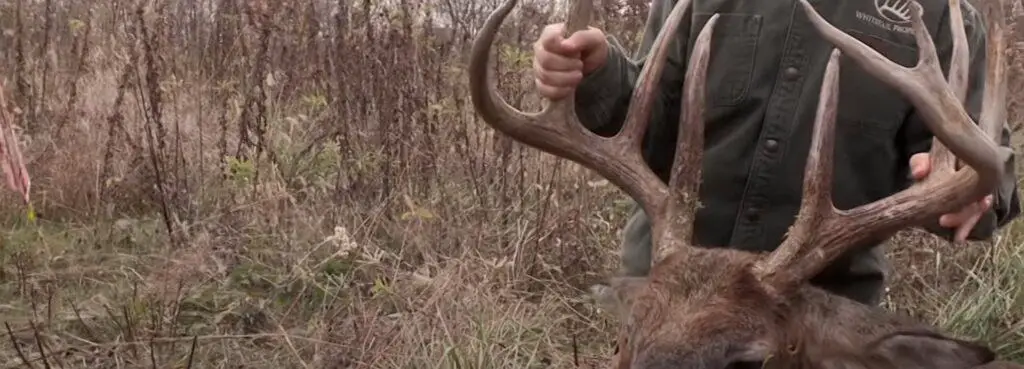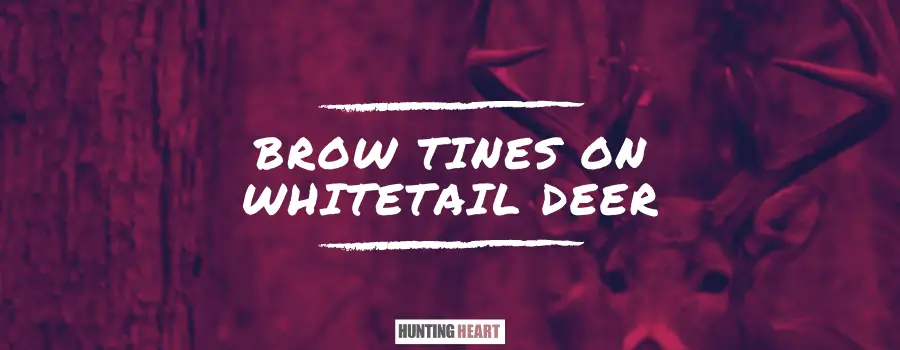As an Amazon Associate I earn from qualifying purchases.
Our Associate portal can be found here
After every hunting season, it is normal for whitetail deer hunters to take into account the happenings of the season if they want to make the next hunting season a success. Looking over the events with a fresh mind can make you understand the changes that you must make in readiness for the next hunting season. One way of getting it right is using data to support your observations when spending time in the fields.
For this reason, when hunting whitetail deer, it is advisable to record your observations when on the hunt to know what is happening with the deer herd under your management. To get a better deer management program underway, you should also back up that observation with quality photos whenever possible. The idea of whitetail deer field observations allows a property manager to track the progress of an individual buck each year. Though challenging to capture a deer on camera it is possible.

Understanding Brow Tines
A particular observation with the whitetail deer population is the lack of brow tines for antlered bucks. Most hunters always wonder why some bucks have brow tines while others don’t. Brow tines are marked as G-1 for hunters who keep scores of antler size.
One way to ensure that this is not a common occurrence for the buck population without brow tines is to remove the deer that bear the unwanted antlers. The process of doing so is often referred to as deer management or cull buck.
It is quite simple, young growing bucks that lack brow tines will mature into old bucks without brow tines. Nobody wants to hunt a buck without a healthy antler to show for it as a trophy. An even worse scenario is that the mature old bucks without tines still get to mate each year and spread their genes bearing bucks that will also lack brow tines
What is Cull Buck?
Deer antlers are heritable meaning that if you have a buck population with huge sized antlers then the next generation will also be the same. Therefore, the responsibility of both hunters and property managers to remove deer that lack brow tines is aimed at improving the deer herd quality.
Cull buck is to selectively remove the buck deer that have a genetically inferior quality of antlers. However, you must understand that a cull buck in one area does not mean it applies to another area. Property owners have different measurables to determine which deer to remove from the herd.
Cull Deer Management Practice
Brow tines on whitetail deer are the most inheritable. Therefore, bucks that miss either both or one brow tine should be candidates for cull buck. The missing G-1 gene is a trait that can be passed on.
Culling is a process you must do immediately once you spot a buck deer that lacks the brow tine. It is a mistake to let a buck that is around four years or older to keep spreading this gene. When you are presented with the chance, be sure to remove it from the herd. Such a buck has at least three years to spread its unimpressive antler gene, and the process is not complicated. You can field judge the deer population in your property by age. Selectively remove the ones that have inferior traits.
Interpreting Data on Brow Tines
According to the data made from an observation of whitetail deer, almost 90 percent of bucks that lack brow tines by the age of 3-4 years had spikes when they were a year old. The reverse is also true. All the bucks that developed over five points when they were aged one year end up growing healthy antlers with all sets of brow tines when they reach maturity.
The future of the deer population lies in the hands of mature bucks breeding. Therefore, you should focus on eliminating the ones with one or no brow tines at all.
Deer Management Implications
This information is a total eye-opener on deer management. The outcome depends on what you want as the property manager. For example, if the goal is to harvest more mature bucks every hunting season, then it does not matter whether they have brow tines or not. The idea is to let all bucks reach maturity so that hunters can enjoy hunting mature deer.
But when the goal is to get both mature and quality bucks in your property, then one way of improving the deer herd is to perform a cull buck on your land. You decide the quality of the bucks to ensure they pass on the right genes.
In as much as the quality of antlers is mostly based on genetics, other factors are influenced by the environment and nutrition. They determine how a buck will look like, hence part of deer management includes a feeding program.
Proper Nutrition for Antler Development
It is clear that deer herds that have suboptimal nutrition also have a high percentage of young bucks with spikes by the time they reach 1 1/2 years of age. In such a situation, the best way will be to either supplement the available food and forage. You can also opt to reduce the deer population to make them readily available food sufficient for your herd. Food security is essential in deer management as it allows the healthy growth of antlers.
Sometimes the property owner can provide enough food and supplements for the deer herd and still see a high percentage of young bucks aged 1 ½-year-old lacking brow tines. In such a turn of events, the problem lies with the genes. The best solution is cull buck regardless of age.
Deer management practices include also thinning the doe herd. It helps reduce old does that were sired by bucks that lack brow tines. It is a management strategy that takes time and should be incorporated as a long-term management practice of deer management.
Conclusion
It is not alarming as only a small percentage of deer are genetically impoverished and do not produce brow tines. Also, there is no telling the pedigree of a wild deer hence cull buck is not entirely foolproof. You should always be observant of the deer herd in your property and make the necessary adjustments early.
Amazon and the Amazon logo are trademarks of Amazon.com, Inc, or its affiliates.

36 years old, been hunting and fishing my entire life – love the outdoors, family, and all kinds of hunting and fishing! I have spent thousands of hours hunting hogs and training hunting dogs, but I’m always learning new stuff and really happy to be sharing them with you! hit me up with an email in the contact form if you have any questions.


